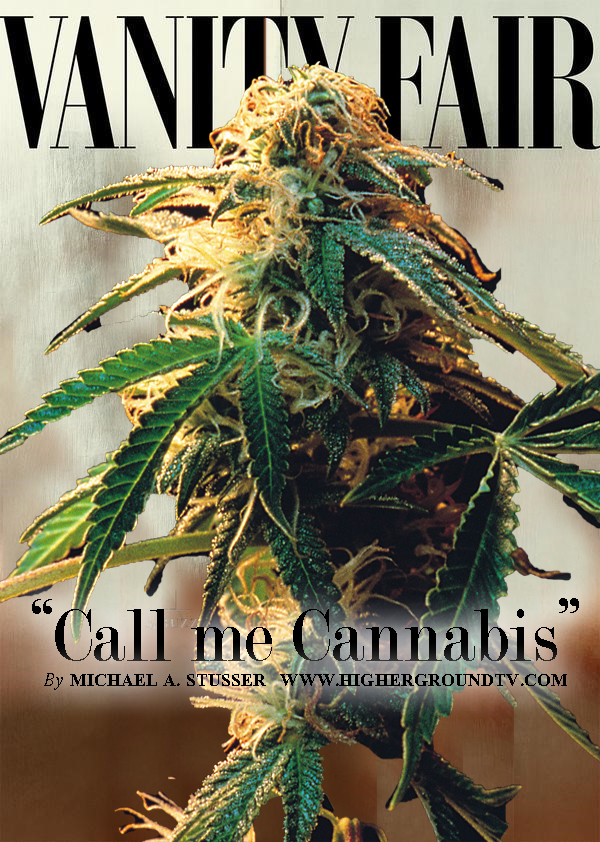Plus: Olympia’s plan to raise the smoking age.
Michael Stusser’s column appears weekly on HigherGroundtv.com as well as the Seattle Weekly and other newspapers around the country.
Marijuana-related business—and the cold, hard cash that comes with it—is the driving force behind the current Green Rush. In Washington and Colorado alone, consumers purchased $370 million worth of cannabis products in 2014. The U.S. market for legal ganja was $2.7 billion—up 75 percent from the previous year. If growth continues—and it will as more states legalize (most predict at least 15 more in the next five years, including California in 2016)—the projected numbers could soar to $11 billion by 2019. I don’t suggest investing in green stocks (after all, most of these businessmen and -women were literally drug dealers last year), but the dope frenzy is just getting started. So this week, let’s start with a market report.
GIRL SCOUT PUSHERS
The best ganjapreneurial story thus far hasn’t been about a boutique grower, high-tech vape, or artisan edible—it was a Girl Scout! For the second year in a row, 14-year old Danielle Lei has set up shop outside San Francisco’s Green Cross medical dispensary and sold boxes of cookies like gangbusters. (What a surprise!) This year the Super-Scout sold 208 boxes in two hours. While there have been no such efforts from the Seattle-based GS Troops (perhaps pestering potheads in front of Cannabis City is too politically incorrect in the Evergreen State), it does make me wonder if the Girl Scouts of America should make a licensing deal with some big-time edible maker. They could broker a hefty up-front fee and royalty, and allow Bhang Chocolates or 420Bars to make THC-Mints and Cannabis DeLites! Just don’t give any to Maureen Dowd. She’ll chow the whole box.
SMOKIN’ SINGLES
Another overlooked market in the marijuana space is the meet market. Over one-third of all couples married since 2005 met online. In addition to match.com and eHarmony, other dating sites help narrow the pool: VeggieDate is for vegetarians looking for love (and a salad), Equestrian Singles hooks up horse-lovers (that sounds weird), TrekPassions transports Trekkies together (“Live love and prosper!”), and Tastebuds attempts to unite music lovers of similar genres. (You’d hate to find out too far down the line that her favorite band is Mumford & Sons.) And now there’s a dating site that connects frisky 20-somethings by their common interest . . . in weed! High There is basically a Tinder app for stoners that matches not only the way you like to get high (bongs, vapes, edibles) but your energy level once you’re fully baked (while marijuana turns me into a hyperactive dancing housecleaner, others may prefer to remain couch-locked . . . ). It’s funny: People used to list drug use as a way to weed out potential paramours.
THE KETTLE FALLS 5
With all the openness of weed dating sites and potrepreneurs selling their wares in broad daylight, let’s not forget growing cannabis is still a federal crime, even here in Washington. In a high-profile case, five Stevens County residents, known as the Kettle Falls 5, are looking at mandatory 10-year sentences for growing marijuana for medical purposes and in compliance with state law. The U.S. attorney is of the mind that the collective had more weed than they needed and were selling ganja to others—thus they raided the property in August 2012 and seized 75 plants. Given the recent passage of the Cromnibus spending bill that bans any Department of Justice funds (read bulldozers, DEA submachine guns, etc.) from being spent on prosecuting medical-marijuana patients who comply with state law, the defendants were hoping to have the case dismissed. U.S. District Court Judge Thomas Rice instead dismissed the argument, and the trial is scheduled to begin Feb. 23 in Spokane. It’ll be hard for the family to build much of a defense, as medical marijuana doesn’t exist (and thus can’t be argued) at the federal level. The case should be a bellwether regarding future legal actions against medical collectives. On a side note, family patriarch Larry Harvey probably won’t have to stand trial . . . because he has Stage IV pancreatic cancer.
PUT THAT IN YOUR PIPE AND WAIT TO SMOKE IT
Finally, a bill being sponsored in the legislature by Rep. Tina Orwall would make Washington the first state in the country to raise the smoking age from 18 to 21. This point is moot for potheads, as the legal marijuana smoking age is already 21—not to mention the (almost unbelievable) study published in the Journal of the American Medical Association which shows that moderate long-term cannabis smoking is not associated with negative lung health. So let’s dogpile on tobacco—which will kill ya: Attorney General Bob Ferguson, who claims smoking kills 8,000 Washingtonians a year, strongly supports the idea of raising the puffing age. “We know that 95 percent of teens who don’t smoke by the time they are 21 never end up smoking,” he said. “It’s really important we are limiting access in those teenage years.” It’s estimated that a raise in the smoking age from 18 to 21 would cost the tobacco industry $20 million a year. Ya know what business they might get into to make up for those losses? Welcome to Marijuana-boro Country . . .





